This article needs additional citations for verification .(March 2023) |
The Treaty of Friendship, Commerce and Navigation between Austria-Hungary and Japan was signed in Tokyo on October 18, 1869. [1]
This article needs additional citations for verification .(March 2023) |
The Treaty of Friendship, Commerce and Navigation between Austria-Hungary and Japan was signed in Tokyo on October 18, 1869. [1]

Anime is hand-drawn and computer-generated animation originating from Japan. Outside Japan and in English, anime refers specifically to animation produced in Japan. However, in Japan and in Japanese, anime describes all animated works, regardless of style or origin. Many works of animation with a similar style to Japanese animation are also produced outside Japan. Video games sometimes also feature themes and art styles that are sometimes labelled as anime.
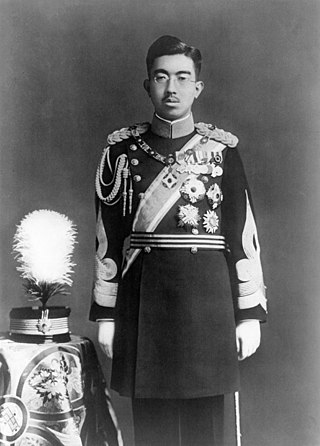
Hirohito, posthumously honored as Emperor Shōwa, was the 124th emperor of Japan according to the traditional order of succession, reigning from 1926 until his death in 1989. He was the longest-reigning Japanese emperor and one of the world's longest-reigning monarchs. As emperor during the Shōwa era, Hirohito oversaw the rise of Japanese militarism, Japan's expansionism in Asia, the outbreak of the Second Sino-Japanese War and World War II, as well as the postwar Japanese economic miracle.

Japan is an island country in East Asia. Located in the Pacific Ocean off the northeast coast of the Asian mainland, it is bordered on the west by the Sea of Japan and extends from the Sea of Okhotsk in the north to the East China Sea in the south. The Japanese archipelago consists of four major islands—Hokkaido, Honshu, Shikoku, and Kyushu—and thousands of smaller islands, covering 377,975 square kilometres (145,937 sq mi). Japan has a population of over 123 million as of 2025, making it the eleventh-most populous country.

Japanese is the principal language of the Japonic language family spoken by the Japanese people. It has around 123 million speakers, primarily in Japan, the only country where it is the national language, and within the Japanese diaspora worldwide.

Manga are comics or graphic novels originating from Japan. Most manga conform to a style developed in Japan in the late 19th century, and the form has a long history in earlier Japanese art. The term manga is used in Japan to refer to both comics and cartooning. Outside of Japan, the word is typically used to refer to comics originally published in Japan.

Shogun, officially sei-i taishōgun, was the title of the military rulers of Japan during most of the period spanning from 1185 to 1868. Nominally appointed by the Emperor, shoguns were usually the de facto rulers of the country, except during parts of the Kamakura period and Sengoku period when the shoguns themselves were figureheads, with real power in the hands of the shikken (執権) of the Hōjō clan and kanrei (管領) of the Hosokawa clan. In addition, Taira no Kiyomori and Toyotomi Hideyoshi were leaders of the warrior class who did not hold the position of shogun, the highest office of the warrior class, yet gained the positions of daijō-daijin and kampaku, the highest offices of the aristocratic class. As such, they ran their governments as its de facto rulers.

Tokyo, officially the Tokyo Metropolis, is the capital of Japan. With a population of over 14 million in the city proper in 2023, it is one of the most populous urban areas in the world. The Greater Tokyo Area, which includes Tokyo and parts of six neighboring prefectures, is the most populous metropolitan area in the world, with 41 million residents as of 2024.
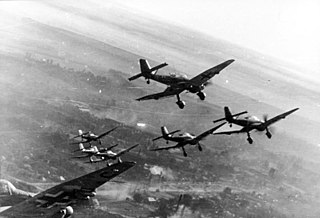
World War II or the Second World War was a global conflict between two coalitions: the Allies and the Axis powers. Nearly all the world's countries participated, with many investing all available civilian resources in pursuit of total war. Tanks and aircraft played major roles, enabling the strategic bombing of cities and delivery of the only nuclear weapons ever used in war. World War II was the deadliest conflict in history, resulting in 70 to 85 million deaths, more than half of which were civilians. Millions died in genocides, including the Holocaust, and by massacres, starvation, and disease. After the Allied victory, Germany, Austria, Japan, and Korea were occupied, and German and Japanese leaders were tried for war crimes.

Hepburn romanization is the main system of romanization for the Japanese language. The system was originally published in 1867 by American Christian missionary and physician James Curtis Hepburn as the standard in the first edition of his Japanese–English dictionary. The system is distinct from other romanization methods in its use of English orthography to phonetically transcribe sounds: for example, the syllable is written as shi and is written as cha, reflecting their spellings in English.
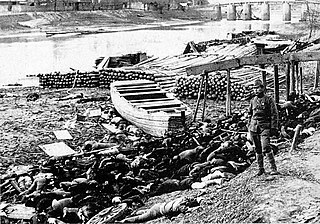
The Nanjing Massacre or the Rape of Nanjing was the mass murder of Chinese civilians by the Imperial Japanese Army in Nanjing, the capital of the Republic of China, immediately after the Battle of Nanking and retreat of the National Revolutionary Army during the Second Sino-Japanese War. The massacre took place over a period of six weeks beginning on December 13, 1937. Estimates of the death toll vary from a low of 40,000 to a high of over 300,000, and estimates of rapes range from 20,000 to over 80,000. Most scholars support the validity of the International Military Tribunal for the Far East, which estimated that at least 200,000 were killed. Other crimes included torture, looting, and arson. The massacre is considered one of the worst wartime atrocities in history. In addition to civilians, numerous POWs and men who looked of military-age were indiscriminately murdered.

Hokkaido is the second-largest island of Japan and comprises the largest and northernmost prefecture, making up its own region. The Tsugaru Strait separates Hokkaidō from Honshu; the two islands are connected by railway via the undersea Seikan Tunnel.
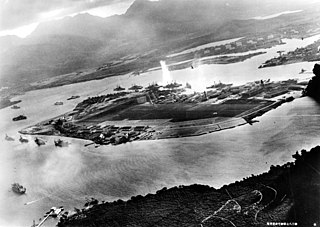
The attack on Pearl Harbor was a surprise military strike by the Empire of Japan on the United States Pacific Fleet at its naval base at Pearl Harbor on Oahu, Hawaii, on December 7, 1941. At the time, the U.S. was a neutral country in World War II. The air raid on Pearl Harbor, which was launched from aircraft carriers, resulted in the U.S. entering the war on the side of the Allies on the day following the attack. The Japanese military leadership referred to the attack as the Hawaii Operation and Operation AI, and as Operation Z during its planning.

The Second Sino-Japanese War was fought between the Republic of China and the Empire of Japan between 1937 and 1945, following a period of war localized to Manchuria that started in 1931. It is considered part of World War II, and often regarded as the beginning of World War II in Asia. It was the largest Asian war in the 20th century and has been described as "the Asian Holocaust", in reference to the scale of Japanese war crimes against Chinese civilians. It is known in China as the War of Resistance against Japanese Aggression.
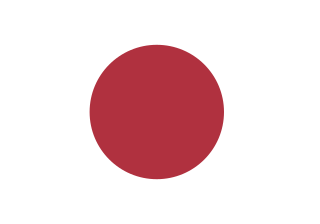
The Empire of Japan, also known as the Japanese Empire or Imperial Japan, was the Japanese nation-state that existed from the Meiji Restoration on 3 January 1868 until the Constitution of Japan took effect on 3 May 1947. From 1910 to 1945, it included the Japanese archipelago, the Kurils, Karafuto, Korea, and Taiwan. Concessions such as the Kwantung Leased Territory were de jure not parts of the empire but dependent territories. In the closing stages of World War II, with Japan defeated alongside the rest of the Axis powers, the formalized Japanese Instrument of Surrender was issued on 2 September 1945 in compliance with the Potsdam Declaration of the Allies, and the empire's territory subsequently shrunk to cover only the Japanese archipelago resembling modern Japan.

Unit 731, short for Manchu Detachment 731 and also known as the Kamo Detachment and the Ishii Unit, was a covert biological and chemical warfare research and development unit of the Imperial Japanese Army that engaged in lethal human experimentation and biological weapons manufacturing during the Second Sino-Japanese War (1937–1945) and World War II. Estimates vary as to how many were killed. Between 1936 and 1945, roughly 14,000 victims were murdered in Unit 731. It is estimated that at least 300,000 individuals have died due to infectious illnesses caused by the activities of Unit 731 and its affiliated research facilities. It was based in the Pingfang district of Harbin, the largest city in the Japanese puppet state of Manchukuo and had active branch offices throughout China and Southeast Asia.
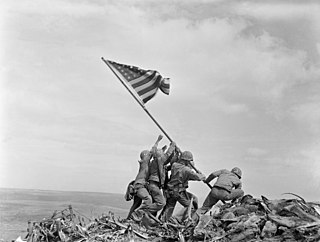
The Pacific War of World War II, sometimes called the Asia–Pacific War or the Pacific Theater, was fought in eastern Asia, the Pacific Ocean, the Indian Ocean, and Oceania. It was geographically the largest theater of the war, including the Pacific Ocean theater, the South West Pacific theater, the Second Sino-Japanese War, and the Soviet–Japanese War in the last few months of the war.

On 6 and 9 August 1945, the United States detonated two atomic bombs over the Japanese cities of Hiroshima and Nagasaki, respectively. The bombings killed between 150,000 and 246,000 people, most of whom were civilians, and they remain the only use of nuclear weapons in an armed conflict. Japan surrendered to the Allies on 15 August, six days after the bombing of Nagasaki and the Soviet Union's declaration of war against Japan and invasion of Japanese-occupied Manchuria. The Japanese government signed the instrument of surrender on 2 September, effectively ending the war.

The first human inhabitants of the Japanese archipelago have been traced to the Paleolithic, around 38–39,000 years ago. The Jōmon period, named after its cord-marked pottery, was followed by the Yayoi period in the first millennium BC when new inventions were introduced from Asia. During this period, the first known written reference to Japan was recorded in the Chinese Book of Han in the first century AD.

The Meiji Restoration, referred to at the time as the Honorable Restoration, and also known as the Meiji Renovation, Revolution, Regeneration, Reform, or Renewal, was a political event that restored practical imperial rule to Japan in 1868 under Emperor Meiji. Although there were ruling emperors before the Meiji Restoration, the events restored practical abilities and consolidated the political system under the Emperor of Japan. The goals of the restored government were expressed by the new emperor in the Charter Oath.

On 11 March 2011, at 14:46:24 JST, a Mw 9.0–9.1 undersea megathrust earthquake occurred in the Pacific Ocean, 72 km (45 mi) east of the Oshika Peninsula of the Tōhoku region. It lasted approximately six minutes and caused a tsunami. It is sometimes known in Japan as the "Great East Japan Earthquake", among other names. The disaster is often referred to by its numerical date, 3.11.